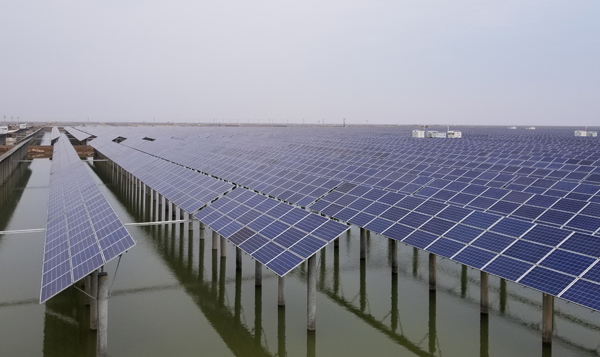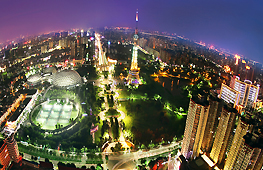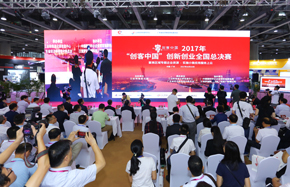Solar project reflects national strategy
For a nation of 1.37 billion people, there are two things that matter most in ensuring China’s growth and prosperity at a grassroots level and beyond – energy and a secure food supply.
Sprawling across vast swathes of pancake flat land of Dongying city’s Hekou district in Shandong province are pool after pool of fish farms. The area spreads as far as the eye can see and produces huge quantities of sustainable fresh and saltwater fish for the domestic and overseas market.
As our coach trundles slowly along a bank separating two pools, a gleam of light in the distance dazzles as it reflects the midday sun. The reflections come from Dongying Shuguang Solar Power’s solar-integrated agriculture project which both farms fish and produces clean electricity.
The Shandong-based company invested 420 million yuan ($61.7 million) in the project, which covers 100 hectares – the size of approximately 160 football fields.
Since coming into operation at the end of 2016 the project has generated 86 million Kwh, and it is expected to generate 112 million Kwh per year in the future, enough to provide clean electricity for 130,000 households.
Tang Yongchao, business manager of Dongying Shuguang Solar Power, says that the project was approached on two fronts.
“The project is inline with China’s strategy to promote renewable energy, which plays an important role improving the environment,” Tang says. “Also, this fish farm had relatively low income before, so the solar panels make the land more productive.”
The domestically-made photovoltaic panels are mounted on concrete piles which rise approximately two meters from the water’s surface, providing shade and reducing the water temperature for the sea cucumbers that are bred there.
Sea cucumbers are considered a delicacy in China and in many countries across East and Southeast Asia, such as Japan and Indonesia, where it is often thought to have medicinal qualities.
“In summer the panels can reduce the water temperature by as much as two to four degrees, which improves the environment for farming sea cucumbers,” Tang says.
Solar-integrated agriculture in Dongying follows similar projects which been put in place in Jiangxi and Zhejiang province earlier this year.
Even though the government is pushing strongly for more renewable energy production across the country, more time is needed before they can become profitable.
“It only needs five to seven people to maintain the entire solar farm because of the intelligent systems which brings costs down,” Tang says. “However, it could be another six to seven years before we will be able to make a profit on our investment.”
According to China’s National Energy Administration, the government plans to spend at least $360 billion on renewable energy by 2020.

A sea of solar panels are mounted about above the water in Hekou district, producing renewable electricity and providing ideal conditions for fish farming. [Photo/China Daily]


Stretching to the horizon, Dongying Shuguang Solar Power’s photovoltaic panels can provide enough clean electricity to power 130,000 households. [Photo/China Daily]















